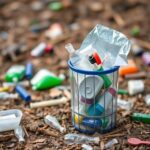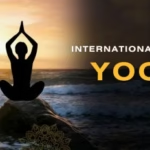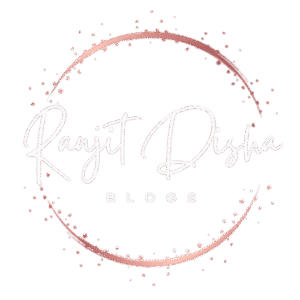A United Global Stand Against Drugs
Every year on 26 June, the world comes together to observe the International Day Against Drug Abuse and Illicit Trafficking, a United Nations initiative aimed at raising awareness of the major problem that illicit drugs pose to society. This day serves as a powerful reminder of the health and social risks posed by substance abuse, and it encourages international cooperation to combat the devastating impact of drug trafficking.
According to the UNODC (United Nations Office on Drugs and Crime), nearly 296 million people worldwide used drugs in 2021—a 23% increase over the previous decade. This growing trend highlights the urgent need for sustained action, awareness, and rehabilitation programs to reduce the burden of drug addiction.
History and Significance of 26 June
The United Nations General Assembly established the International Day Against Drug Abuse and Illicit Trafficking in 1987 as a response to the expanding drug problem across the world. The date, June 26, was chosen to commemorate Lin Zexu’s efforts to dismantle the opium trade in Humen, China, in 1839—a pivotal moment in the fight against drug trafficking.
The significance of the day lies not just in remembrance, but in mobilizing action, spreading awareness, and encouraging governments, organizations, and individuals to play their part in creating a drug-free world.
The Global Drug Problem: Scope and Impact
1. Health Implications
Drug abuse affects physical and mental health, often leading to diseases like HIV/AIDS, hepatitis, lung and liver failure, and mental health disorders.
According to the World Health Organization (WHO), over half a million deaths annually are directly or indirectly linked to drug use.
Opioids are the most harmful category, accounting for 76% of drug-related deaths.
2. Social and Economic Burden
Substance abuse impacts families, workplaces, and educational institutions.
Drug trafficking fuels organized crime, violence, and corruption.
The economic cost of drug abuse—healthcare, law enforcement, lost productivity—is estimated in billions of dollars globally.
3. Impact on Youth and Vulnerable Communities
Teenagers and young adults are most susceptible due to peer pressure, stress, and lack of awareness.
Marginalized communities face higher risks due to limited access to education and health services.
UNODC’s Role and Campaign Themes
The UN Office on Drugs and Crime (UNODC) plays a key role in addressing global drug issues. Every year, it launches a theme-based campaign to encourage awareness and preventive action.
Recent Campaign Themes Include:
2024: “The evidence is clear: Invest in prevention”
2023: “People first: stop stigma and discrimination, strengthen prevention”
2022: “Addressing drug challenges in health and humanitarian crises”
These themes guide the world in setting priorities—from improving rehabilitation centers to targeting root causes such as poverty and mental health.
Key Objectives of International Day Against Drug Abuse
Educate the Public: Raise awareness about the dangers of drug abuse and how it affects individuals and society.
Promote Healthy Lifestyles: Encourage youth and adults to adopt healthy coping mechanisms.
Encourage Community Action: Empower local organizations and NGOs to take proactive steps.
Support Law Enforcement Efforts: Enhance national and international efforts to combat trafficking.
Strengthen Rehabilitation and Reintegration: Emphasize the importance of rehabilitation and social inclusion for recovering addicts.
India’s Role in Combating Drug Abuse
India is particularly vulnerable to the drug trade due to its location between the Golden Crescent (Afghanistan, Iran, Pakistan) and the Golden Triangle (Thailand, Myanmar, Laos)—two major opium-producing regions.
National Action Plan for Drug Demand Reduction (NAPDDR):
A comprehensive policy that focuses on treatment, rehabilitation, and awareness.
Involves NGOs, youth clubs, schools, and religious organizations.
Nasha Mukt Bharat Abhiyaan (Drug-Free India Campaign):
Launched by the Ministry of Social Justice and Empowerment.
Targets 272 vulnerable districts with high drug prevalence.
Focuses on youth empowerment, education, counseling, and social media campaigns.
How You Can Make a Difference
1. Educate Yourself and Others
Share verified information about drug abuse prevention.
Talk openly with children and teenagers about the risks of substance abuse.
2. Support Local Organizations
Volunteer or donate to NGOs working in drug rehabilitation and awareness.
3. Say No to Peer Pressure
Stand firm against social pressure and encourage others to do the same.
4. Participate in Campaigns
Join awareness walks, social media campaigns, and school/university programs.
5. Promote Rehabilitation, Not Punishment
Treat addicts with empathy and support them in their journey to recovery.
The Role of Technology in Fighting Drug Abuse
Technology is playing a critical role in curbing drug abuse and trafficking:
Mobile apps for mental health and substance abuse tracking.
AI and Data Analytics to track illegal drug patterns and hotspots.
Social media monitoring to identify drug-selling platforms.
Virtual counseling platforms to help those seeking help discreetly.
Real Stories: Inspiration from Survivors
Ravi’s Journey from Addiction to Advocacy
Ravi, once a heroin addict from Punjab, turned his life around through a local rehab center. Today, he runs awareness programs in schools and colleges, helping others break free from addiction.
Salma’s Fight for Her Son
A single mother from Mumbai, Salma fought legal and social battles to get her teenage son out of drug addiction. Her story of persistence is now featured in community programs as a model of strength.
Such stories show us that recovery is possible, and with support and awareness, lives can be transformed.
Educational Institutions and Youth Engagement
Schools and colleges are frontline institutions in the fight against drugs:
Incorporate drug awareness in the curriculum
Workshops on stress management, meditation, and mindfulness
Peer-to-peer counseling and support groups
Drug-free campus campaigns and competitions
Empowering the youth to become anti-drug ambassadors ensures a ripple effect in the larger community.
UNODC Call to Action 2025: Prevention Over Punishment
As the world prepares for 2025, UNODC is shifting focus toward prevention, education, and supportive measures rather than harsh punitive action. The emphasis is on:
Science-based prevention programs
Community policing
Holistic rehabilitation systems
International cooperation in intelligence sharing
This approach acknowledges that addiction is a disease, not a crime, and must be addressed with compassion, not condemnation.
Conclusion: Together Toward a Drug-Free World
The International Day Against Drug Abuse and Illicit Trafficking is more than a symbolic observance—it’s a global call to action. In a world where millions are struggling with addiction, and countless lives are lost to illicit drug trade and misuse, it becomes our collective responsibility to build awareness, offer support, and work toward a future free from the grip of drugs.
Whether you’re a student, teacher, parent, policy-maker, or social worker, your actions matter. On this 26th of June, let us pledge to say NO to drugs and YES to life, not just for one day but every day.
Related posts:
 India’s Initiatives Against Plastic Waste: A Road Towards a Sustainable Future
India’s Initiatives Against Plastic Waste: A Road Towards a Sustainable Future
 Yoga for a Stress-Free Life: An Ancient Solution for Modern Lifestyle
Yoga for a Stress-Free Life: An Ancient Solution for Modern Lifestyle
 Chinta Chhodo Sukh Se Jeeyo: Embrace a Worry-Free Life
Chinta Chhodo Sukh Se Jeeyo: Embrace a Worry-Free Life
 Stop Worrying and Start Living: A Guide to a Stress-Free Life
Stop Worrying and Start Living: A Guide to a Stress-Free Life
 Alcohol-Free Mocktails for a Fun Summer Party
Alcohol-Free Mocktails for a Fun Summer Party
 How to Plan a Last-Minute Summer Trip: A Stress-Free Guide
How to Plan a Last-Minute Summer Trip: A Stress-Free Guide
